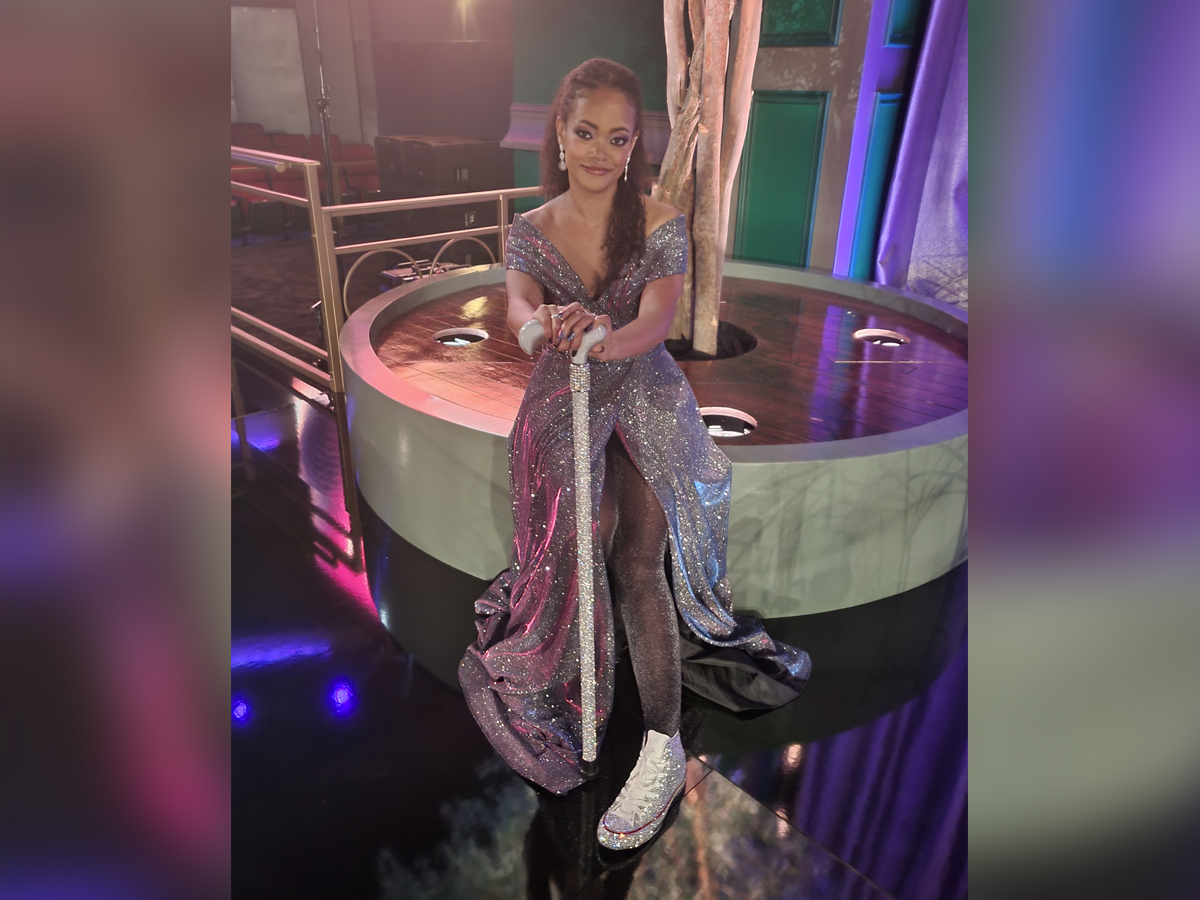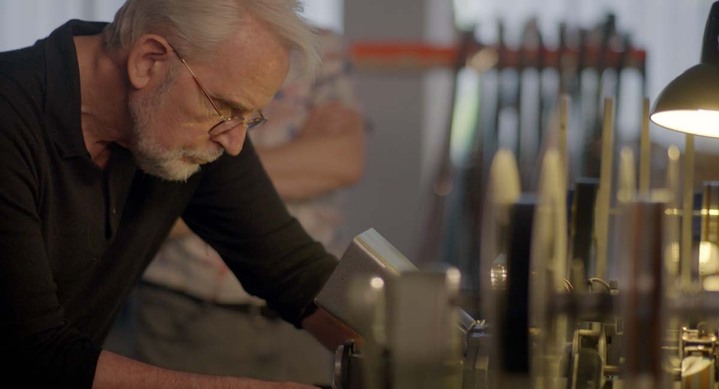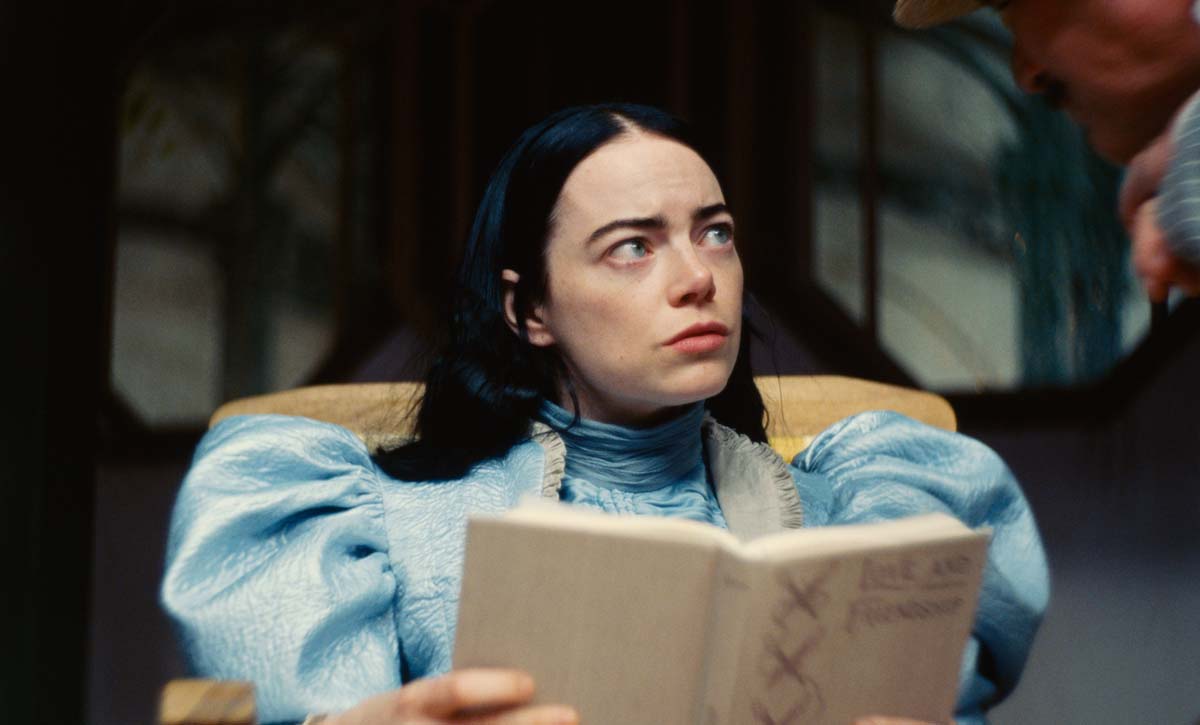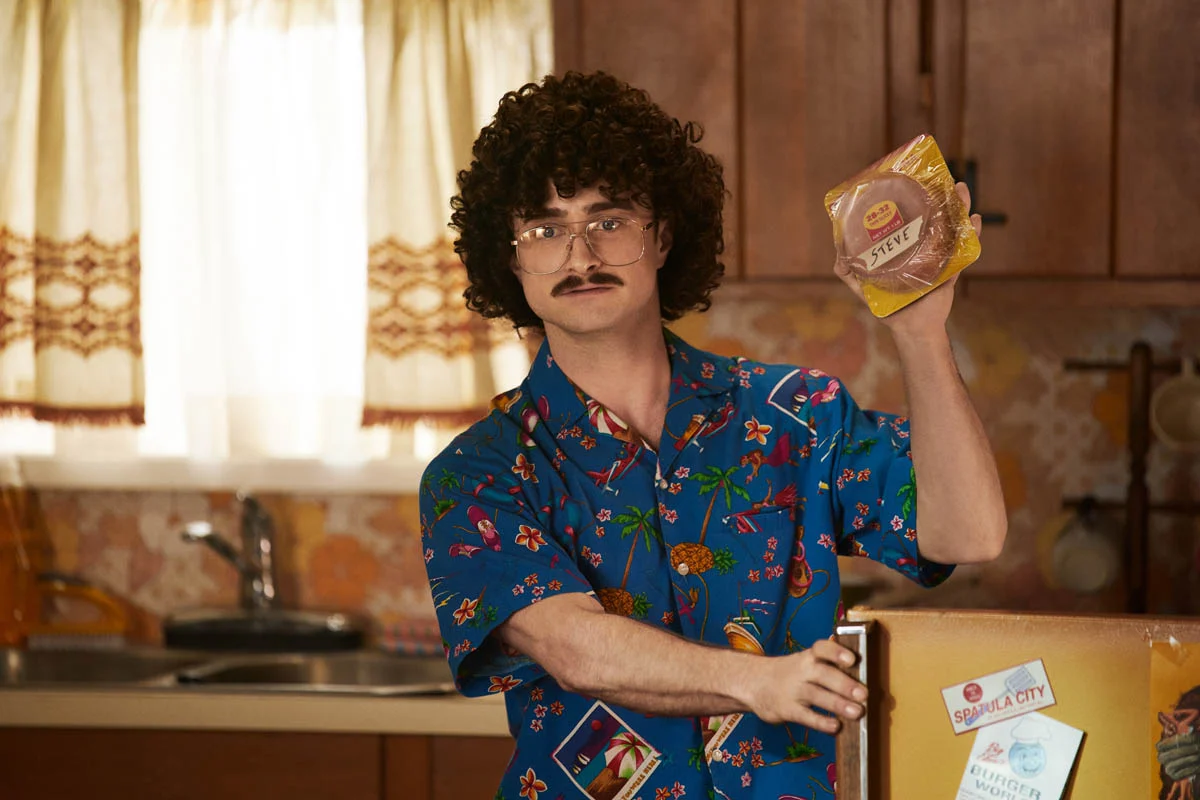Triple Emmy-nominee Stephanie Filo, ACE
Stephanie Filo, ACE, chats about what it was like jumping from comedy editing to drama on her historic three Emmy nominations in one year.
Today on Art of the Cut, editor Stephanie Filo, ACE. Stephanie just hit the Emmy trifecta: she was nominated for three Emmys for three different series! She was nominated for Outstanding Editing in a Variety Program for A Black Lady Sketch Show along with editors Malinda Zehner Guerra, and Taylor Joy Mason. Also in the Variety Programming category, she's nominated for History Of The World Part II with her co-editors, Angel Gamboa Bryant, Daniel Flesher, and George Mandl. And finally, for Outstanding editing in a Limited Series, she's nominated for Dahmer - Monster: The Jeffrey Dahmer Story.
Stephanie Filo is originally from Sierra Leone, West Africa. She has two Emmy wins, and an ACE Eddie win for A Black Lady Sketch Show. And was a Peabody Award winner for her work on the documentary Surviving R. Kelly and an Emmy winner for her work on the documentary Separated. She was also nominated for an Emmy for her work on the documentary Aging Out. She also recently edited the feature film We Grown Now, which is soon to be released.
Triple Emmy-nominee Stephanie Filo, ACE
Stef, how does it feel to be the Queen of the Emmys?
I still haven't fully processed it, if I'm being honest with you. I keep getting hit with just this immense gratitude because I have such an awesome community and support system that's propped me up over the years, including yourself, Steve, and taught me stuff, and talked me off the ledge many times. This is really a reflection of that support system. So I'm just really grateful for that and for all of them, all of you.
Well, that's very kind of you to say to everybody that has supported you over the years, I'm sure.
Yeah. Everybody the whole editing community. We all lean on each other and support each other and it's just a cool thing and something that's special to me, I think about this Emmys or these these nominations, too, is that there are so many teams that are super-supportive or visibly supportive of each other. Timothy Good and Emily Mendez. We have Kelly Dixon and Josh Earl, the RuPaul's Drag Race team. I know there's Paul Cross and Jaime Martin, husband and wife team. A whole bunch of different editors supporting each other for these nominations. So it's really cool.
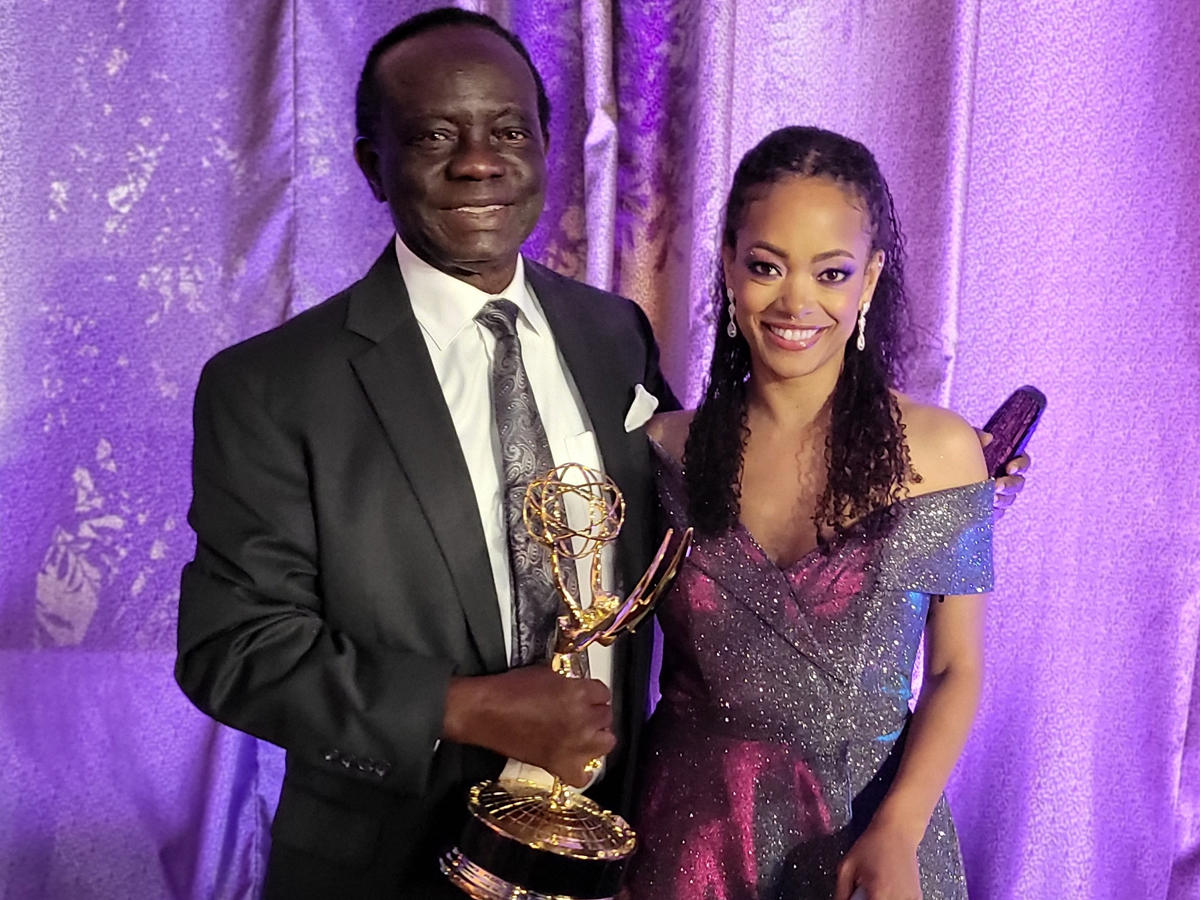
Filo and her very proud father at the Emmys.
Well, let's talk a little bit about the editing process. I wanted to start with Dahmer because I thought that had some really interesting stuff in the episode that you're up for. Just right off the bat, the first scene of that episode is the forensic team in the backyard. Do I have that right? And the sound design is amazing. Can you talk about what you do personally with sound design, what you assign to an assistant, and what that sound design gets you?
Well, sound design for this whole episode was really huge for me and my assistant editor. So what I did was cut an assembly of a scene, pass it to her, and she would do a sound pass on it without me giving any guidance. Just saying, “Here, can you do what you think is the best pass of this?” Then she would hand it back to me and I would give notes or add some different sounds. There's a scene later in the episode where Jeff gets drugged. It's actually, I think, maybe the only scene in the series in his perspective, but he basically accidentally drugs himself in a hotel room. So you get immersed in this distorted audio throughout that scene. And I just really wanted to feel like we were feeling what he was. I wanted it to seem that way. So what we did was — my assistant editor, Lyric — basically did so much Foley in her own bathroom: crushing her vitamins, doing all of this stuff just to try to get it to sound as authentic as possible. We did an accordion style with the audio layers. If you listen carefully, you'll hear the normal dialog track, then you'll hear another out-of-sync track as well that is slowed down. Then another one that's again off-sync that's slowed down or has a kind of Deverb effect on it. So we had, I think maybe 50 audio tracks in that scene alone. We use RX iZotope filters to try to distort things and see if we could get that feeling down. And then immediately at the end of that scene, you're cut out of it into reality again. We definitely had a lot of back-and-forths as far as sound goes, and I'm also really obsessive about sound in general, so we approached it knowing we needed to really focus, especially on this episode on sound elements.
Steph and Lyric Ramsay at the ACE Holiday Party.
I want to give Lyric her due What's Lyric’s full name?
Lyric Ramsay.
Lyric Ramsay. All right, great work. Lyric. One thing that struck me is you said you wanted to really feel how Dahmer was feeling and you used audio to do that. So often people are saying that the key to feeling it is the audio.
I think it's often like overlooked or maybe people think about doing it later, but I feel like it's so much easier to sell a cut if you're in a screening with anybody, if you say, “This is what I think the way the episode should feel.” I think Lyric and I are both obsessive about that in particular. This series was so much about being just hyper-real. A lot of the scenes play in wides for a majority of the time, and that was so that you could really objectively take whatever you could from the frame without feeling like we're trying to sensationalize the story or without feeling like we're kind of telegraphing what you're supposed to be feeling. We really wanted it to be a situation where you could look at a scene and just gather what you need to gather from it. When you don't have a ton of cuts within a scene, sound was definitely integral to that as well.
Avid timeline screenshot of the Emmy-nominated episode of Dahmer. Gorgeous!
I just came across a quote from a previous interview where somebody said that if you don't have good audio, sometimes you get notes about things that you wouldn't get notes about if the audio wasn't right. You'll get picture notes about problems, even though they're really audio things.
Yeah, I always get like extra anxiety before a screening if I don't think I've done enough yet with the audio. So I think that's very true.
The interview room where they start talking to Dahmer starts with an oblique shot of his cigarette and you really don't see him for a while. You kind of hide him. What was the purpose of that? I loved it, but why?
Originally, I cut out of the crime scene straight onto his face and it felt like we really needed to just sit with him a moment longer. So it was kind of just trying to explore ways that we could have that extra moment. That shot is actually from a different episode. It's dailies from a totally different episode, just repurposed and cheated to look like it's part of that scene. But it was just exploring how we could extend that moment a little bit because you're coming out of a gruesome forensic crime scene into this interrogation. So it just needed that extra beat where you could feel the pause and also maybe just live with that character just slightly so you can think, “Okay, we're starting the story.”
So often, with transitions between scenes, you jump into something and realize that it’s too fast. I'm amazed that you were able to find that cigarette shot from another episode. Is it just a memory thing?
In this series we did a lot of jumping around in time, so I think we were all hyper-aware of each other's scenes a little bit because one minute the scene might exist in episode three, the next minute it exists in four. The end of episode three is the same scene that starts episode four from a different time period. So it's because we had to be kind of extra aware of what the timeline looked like and how we were shifting it around in the edit. It was definitely a find that I was happy about. But it was good that we knew what existed throughout.
You used a pre-lap to get to the psychiatrist's office. I also spotted at least one post-lap. What are the values of those post-laps and pre-laps?
Those were especially helpful in this show because of the time jumps. I'm trying to remember from cutting that scene. I know that that scene was about 3 or 4 times longer than it ended up being in the actual episode, but we wanted to connect what the detectives were asking him about to what the next scene was without it being super-jarring. So a lot of times in our time-lapse, just to make sure that the thoughts connected, we did a lot of pre-lapping and post-lapping.
Steph at work on Dahmer... Yes, that is a WACOM Cintiq. Yes, it's OK to be jealous.
In that psychiatrist's office, there's also a really interesting flash to some organ viscera.
Yeah, it was really an attempt to get more in Jeffrey's mind a little bit. That scene that happens later in the episode is the only other time we're in his own headspace. So I think just those little flashes help with tying together what was happening. And also the therapist is speaking in very therapist-speak and so it was just good to have something visual that you could connect that with because he's saying some pretty upsetting things. So it was if you're not fully immersed, you can't grasp what's happening.
Did you find that the order of things and when you intercut things are different than scripted, and why?
There were always time jumps, but we messed with those more in the edit as well to make it make more sense or to kind of highlight moments in Jeff's life. In this episode, there's one sequence where his dad sends him to college, he fails out of college, then he's in the Army and then he fails out of the Army. There's one scene where he comes home for Christmas dinner with his family, and it used to play as a traditional Christmas dinner — him just hanging out with his family awkwardly. There are also scenes of him in the Army learning all these messed-up things about Halcion and how to drug people. I tried to think through how I could connect those two things to maybe make the time jump a little quicker as well and kind of connect what was happening in the Christmas dinner scene because you hear his dad kind of talk about things and Jeff kind of talks about things. He's saying he's a medic in the Army, and then you cut into him learning about how to drug people. So it was just that looking at the scenes as they played naturally felt like it needed some sort of connective tissue. So we definitely played around with that a lot. I'm happy with where it kind of landed.
There's a bunch of scenes that play — I won't say they play dry because there's probably sound design under them — but there's no music. What made you feel this shot, this scene needs a little music cue, and this scene really should play dry.
I think that it kind of just depended on what the content was in the scene. A lot of the scenes where you're sitting in this kind of wide moment, as a team we felt like, “Oh, you should really just feel this as it played out naturally” as opposed to trying to like telegraph what people should be feeling at any given time. The music I think only kind of came in to punctuate moments. The wides in particular I think are mostly without music for the most part. We learned at one point during the edit that Jeffrey used to listen to whale sounds in prison. And so if you listen really carefully, there are different whale sounds that punctuate the score. So we kind of built that into our temp score. In this episode — episode four — he says something in the detective interrogation like, “I was just trying to be a good boy.” We punctuated it with a whale sound that leads us into the next scene so that almost also existed as a sound design punctuation in the edit, which was interesting.
One of the places I remember hearing music is, I think when he finds the father's box of mementos in the closet, there's a little music cue there, but then other places you like the diner scene with his dad where he almost admits what's going on with him. I don't think there's music there, right? You let the emotion of that performance carry.
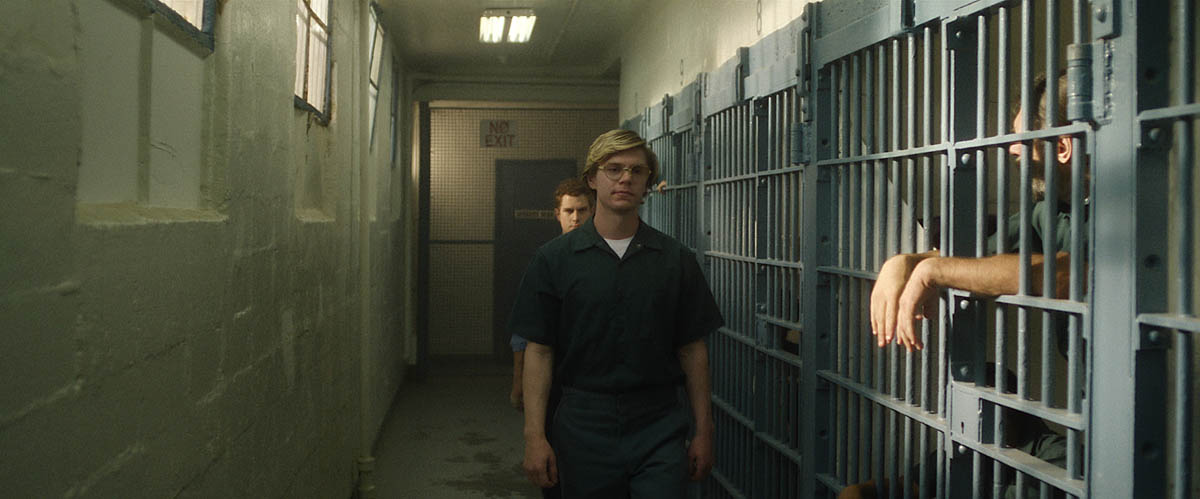
Yeah, I think it's whatever's playing at the diner, there's kind of like background music. And I think at the very end I kind of went into like score at that point because he's trying to confess his fantasies, essentially, and the dad doesn't want to hear it. That scene also in particular, was one where I was just worried about Jeff coming across too sympathetically. That's another thing that I think we all were really, really conscious of as we were editing it. So I wanted to make sure it played as if this is just them at a diner and you hear diner music in the background. You don't hear too much score except where it's absolutely necessary.
Later, he gets drunk at a state fair and ends up getting arrested. That's a crazy montage.
Yeah. The Ferris wheel into being drunk and looking at all of the figurines. That one was interesting because Evan Peters is just such a phenomenal actor that it was terrifying editing it because it felt like, “Should I be seeing this?” Jeffrey's at the state fair and getting arrested. It just felt like I was looking at actual Jeffrey Dahmer at the state fair. So it was an interesting one to put together. In trying to tie his perspective into this episode, we have this fun ability to play with lots of whale calls within the state fair scene if you watch it, but also, there are a lot of kind of creepy things at a state fair when you think about it. And our director, Jennifer Lynch shot a lot of interesting B-roll to emphasize the fact that Jeff was not sober in this scene. If I recall, it goes from him talking to his grandma just straight into this montage moment. So it was a matter of playing with the ebb and flow of it. And I think I took it really far with that montage. I thought, “I don't think people are going to like this, but I'm just going to make an attempt.” But people seemed to gravitate towards it because we ended up adding more of these unique, interesting shots in that montage. And also that state fair leads us to the beginning of our time jumps as well in that episode.
What effect did it have on you? You mentioned a couple of times, “I shouldn't be seeing this. These are really disturbing images. This is disturbing information from the psychiatrist.” How did you protect yourself as a person from that?
It was a challenge because whenever I do any project, I try to immerse myself as much as possible, which I think for a project like this has — unfortunately — not great effects at times. Lyric and I, would check in, frequently throughout the day — in the morning, in the evening — to ask, “How are you? How are you doing? How are you feeling?” We also both watched all of these different Dahmer documentaries. We were reading Dahmer books, listening to music that was within the tone just to be in that headspace. So, it was a lot of check-ins, not just with Lyric, but with the whole editing team. I feel like we kind of had different conversations about that, and it was a journey, to say the least, working on this, but I think, as editors, something that I don't think is talked about enough is self-care and how important it is to be able to distance yourself from what you're working on when you turn your computer off at the end of the day. This show was definitely a reminder of that for me. You just need to find a way to separate yourself a little bit, especially if you're, 12-plus hours a day looking at material like this, especially when you're passionate about telling this story as well. You just have to find outlets or think about things that make you happy — that are not quite as bleak as often as you can, or listen to music or go for walks or…
… hang out with your dog…
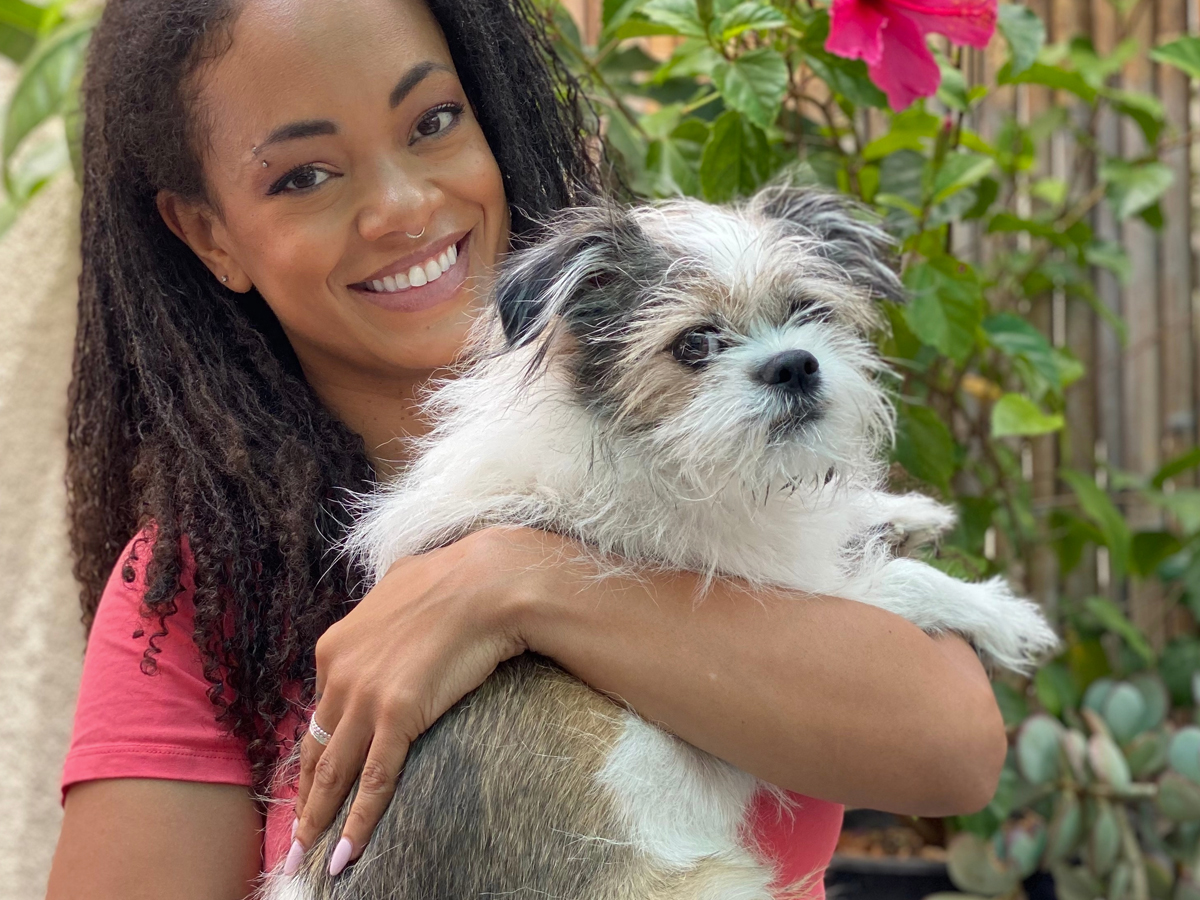
Exactly. Hang out with your dog. It's just like a reminder of that, for sure.
Let's talk about A Black Lady Sketch Show just for some whiplash.
Totally similar show.
Totally similar. That's what's so impressive: that you are nominated for all these different shows. A History of the World could be thought of as somewhat similar to Black Lady Sketch Show, but even those are pretty radically different. The pacing on Black Lady Sketch Show — especially the courtroom sketch, I was thinking about — is so fast. Talk to me about the process of that. Can you talk about what kind of notes you're getting? “Oh, this needs to be tighter. We need to pace this up.” And just building something like that courtroom scene.
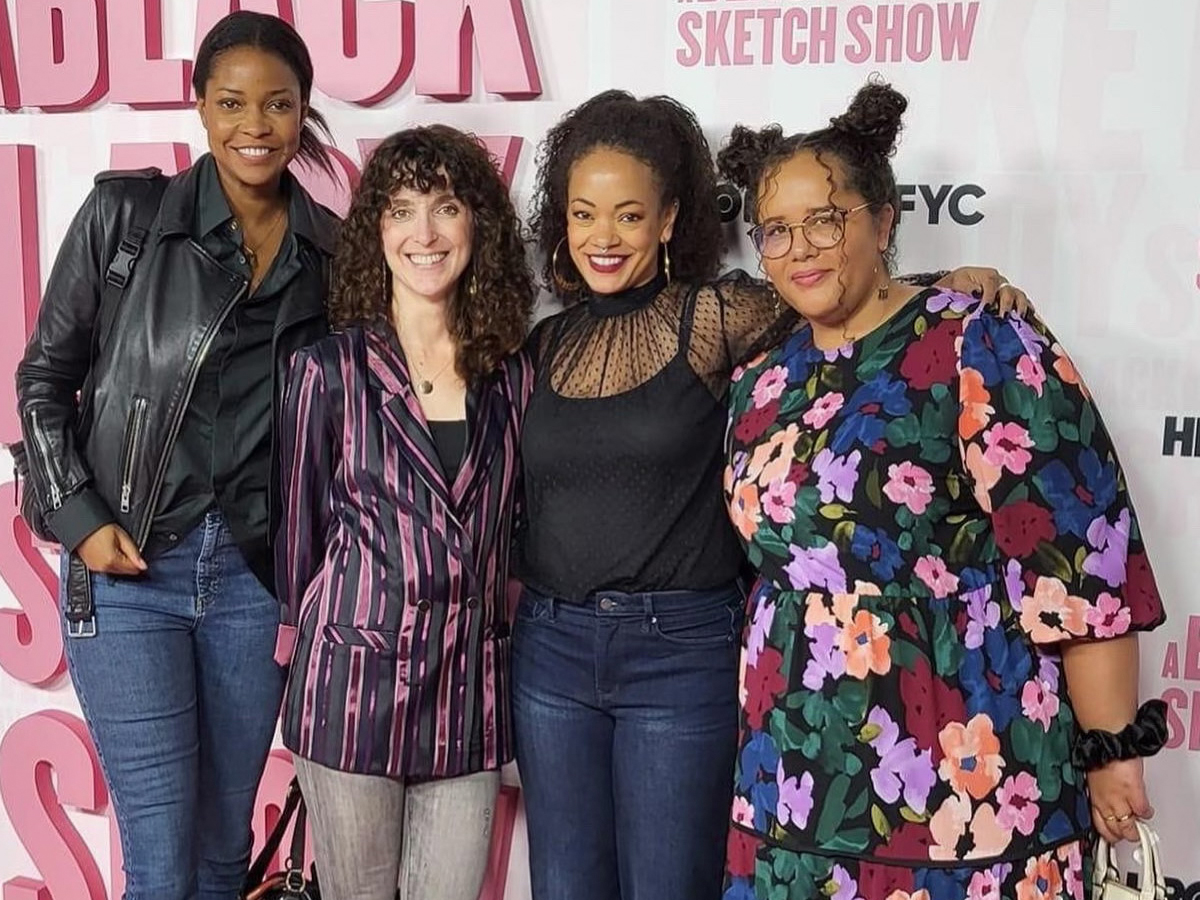
ABLSS Season 4 editors: from left: Taylor Joy Mason, Malinda Zehner Guerra, Filo, Gwyn Martin-Morris
Robin Thede has really developed a voice of what the show is. Everything is about maintaining that voice. The voice of A Black Lady Sketch Show is loud and fast and quick joke upon joke upon joke. I think because this was my third season working on it, I have kind of figured out just how fast it needs to be. But it's by design because if you watch any of the sketches over — like on repeat — you'll find new jokes that you didn't catch the first time because of how fast it is, and that's intentional. So it's always an interesting exercise in just making sure that the pace is as fast as possible. There's one sketch that's kind of recurring and it almost pokes fun at that exact notion. In season two, there was a sketch called “Gel it like it is,” then this season there was “Hotel it like it is” where you have these two women who are talking at insane speeds. And by the end, you're almost in a wind tunnel listening to these women talk and missing half of the things they're saying. And you realize, “Oh, I need to go back and watch this again.” So it's just a fun show to cut in that sense because you're I think, “I'm going to throw in something that I think is going to make Robin laugh” or “I'm going to throw in something that I think is going to make one of the other editors laugh.” You pepper in these moments. Something we did a lot this season: you'll sometimes hear improvised conversations happening in the background. There are a few sketches where if you really listen, you can hear a whole other scene playing out that's hilarious on the side. That was something that we really tried to incorporate this season as well. The “Courtroom Kiki” sketch is almost the blueprint for that style for sure because the first time you saw it — it's in season one — it's super fast. In season two, it's super fast. So this one was kind of the culmination of all of those.
Avid timeline screenshot from A Black Lady Sketch show. Check out the track labeling!
The Knights of the Roundtable sketch. I'm not sure if that's what you guys called it.
Gladys and the Knights of the Roundtable.
Of course! Of course, that's the title! That had me thinking about Multicam and how the show is shot, or at least how that scene was shot and how do you deal with multicam in the edit?
I think most of our sketches are two cameras. Sometimes there are three. “Courtroom Kiki” is three usually. There's so much improv that happens on our show. I don't know if we could cut it as well if we didn't have those extra angles to just make sure the continuity works as well because a lot of times they'll shoot 1 or 2 takes that are as scripted and then they'll go off book for the rest of the takes. So you're kind of scrambling to make sure that everything is cohesive. So working with multiple angles is crucial on this show in particular.
Do you use the multicam features of Avid? And when you're in your bin, are you looking at the individual angles, or are you just looking at a group clip?
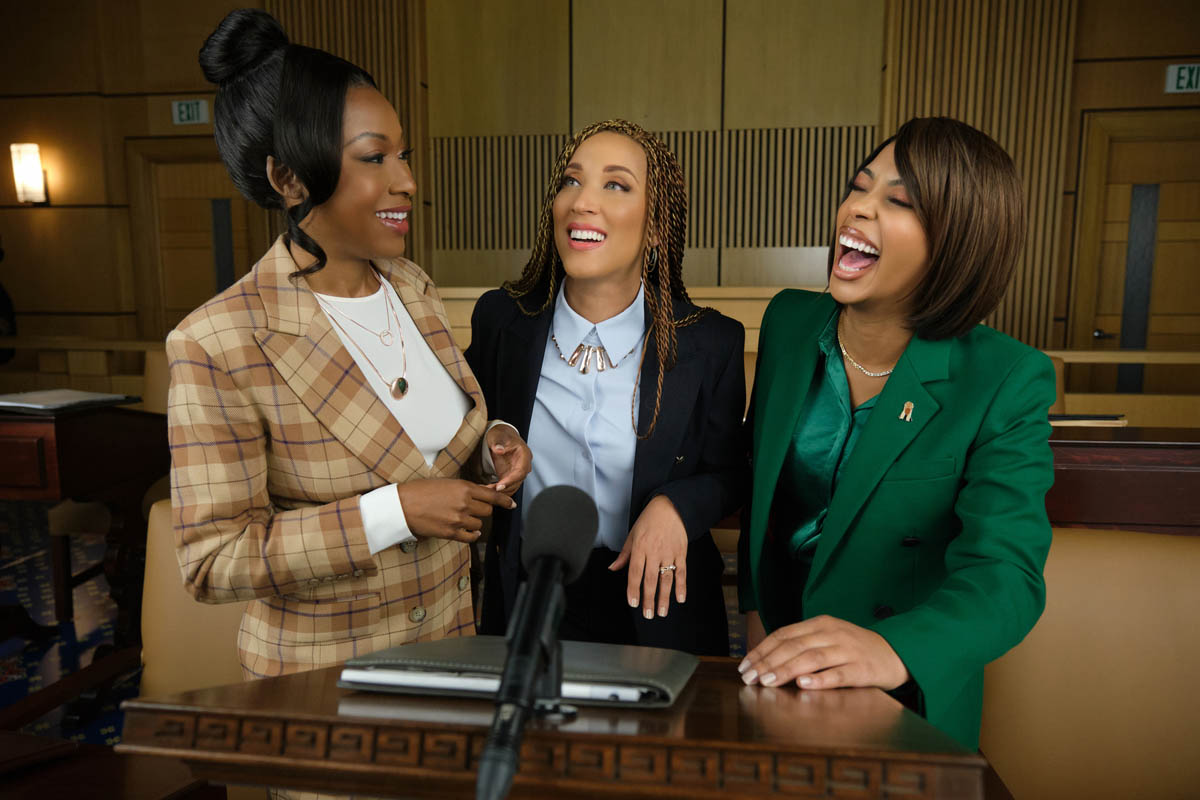
Usually, I'll pull up the whole group, so I'm looking at all three angles at once as I'm watching, but I'll usually watch through a couple times just to make sure I don't miss anything. Then once I'm in the edit, sometimes I'll have just the multicam feature quad split activated so that I can watch the scene. I can also see, “Okay, I also have this angle and this angle of this shot” just as a way to refer back quickly.
So I would think that's the way you watch dailies too, right? You don't bother trying to watch all four angles individually of a single take.
Sometimes I will, but I think usually because on this show we have 2 to 3 days maybe to get our editor’s cut ready for our director and for Robin. Robin likes our editor’s cuts to be as close to air-able as possible. So you don't always have a ton of time to watch through every angle one at a time. So usually what I'll do is I'll watch all three or both angles at once, and then I'll save my selects in a bin and label the ones that I think, “Oh, this one made me laugh the most.” “This one is funny, but I could probably do without it” and I'll just kind of highlight each of those and mark what the angles are in my notes on the side.
And then adlibs, as you pointed out, is a whole other level of difficulty to the editing. How do you deal with the amount of adlibs, especially when you're trying to put a scene together for Robin because it could be 15 minutes long with all the possibilities?

ABLSS Production Design Team, Hair/Makeup and Costume teams (from left: Cindy Chao, Shavonne Brown, Jacqueline Knowlton, Michele Yu, Michelle Page Collins, Filo)
Something that I love that Robin says is, “Just present to me the thing that's the funniest to you. It doesn't matter what it is. It just has to be the thing that makes you laugh the most, then we'll build from there,” which is, I think, tremendous as an editor because she gives you that leeway and really kind of champions you to make something as funny as possible. So it is tough because A) you're trying to make something that's as air-able as possible but B) something that's as funny as possible, so you do end up with these longer sketches on your first pass and then what I'll do before I hand in my editor’s cut is sometimes I'll pull out these extra moments that I peppered in just to try to get it to a time that works. Then I'll have a bin of alts that I can present as well.
How do you present those alts? As a string-out, or do you say, “Here's one funny joke. Here's another funny joke?”
It kind of depends on the sketch. Robin also remembers every take. She can honestly say, “I remember we had an improv moment where I said this and it was at around like this point in the day and this take.” And you go to it and “Oh yeah, that's exactly correct.” So it's kind of nice that she has such an amazing memory with that. But what I'll do sometimes is if she says, “This beat isn't hitting the way I want it to.” I can say, “I have three other improv moments that are kind of the same if you wanted to see them.” But also at the end of every episode there are outtakes — which are really just improv moments that didn't make it into the show. What happens when we assemble episodes is we'll send a string-out of all of the outtakes from a sketch — all of the extra unused improv moments — and sometimes she'll watch that and ask, “Wait! Why aren't we using this? Let's put this into this sketch.” So I think at the end of the day, she's able to see everything, but, sometimes there are specific alts that you decide, “Okay, I'll show you these.”
Ashley Nicole Black at the 2023 Eddies (from left: S. Robyn Wilson, Taylor Joy Mason, Ashley Nicole Black, Filo, Bradinn French)
With a lot of what we do, you've got a team around you. But I really think — because I've met so many of your colleagues on A Black Lady Sketch Show — about the camaraderie of that. Talk to me a little bit about just how fun it is or useful it is or what the interactions are with the other people on the team: Taylor Mason, Bradinn French, Daysha Broadway, Jessica Hernandez, Stacy Moon, Robyn Wilson, Malinda Guerra, Shaeed Qaasim…
We're all just such a close-knit team. These are all my friends that I hang out with outside of work as well. We have a group chat going always they’re people that I adore so much and I think we all know each other well enough that it’s like, Taylor is putting something in here that she knows I'm going to laugh at or Malinda is putting something in here that she knows I'm going to laugh at and vice versa. At one point early in the season we decided to do a Friday Zoom Happy Hour where we can show our sketches for the week, which is really fun because you can kind of look at those and like just laugh together, but also give feedback and stuff, but as the season gets more busy, sometimes we kind of taper down the amount of Zoom Happy Hours. It's a very close-knit team. I feel like we're always interacting and asking each other questions and sharing images of our pets, and it's just a really special, special group.
I think it's funny that you feel like you can tell that somebody like Taylor put a joke in just for you.
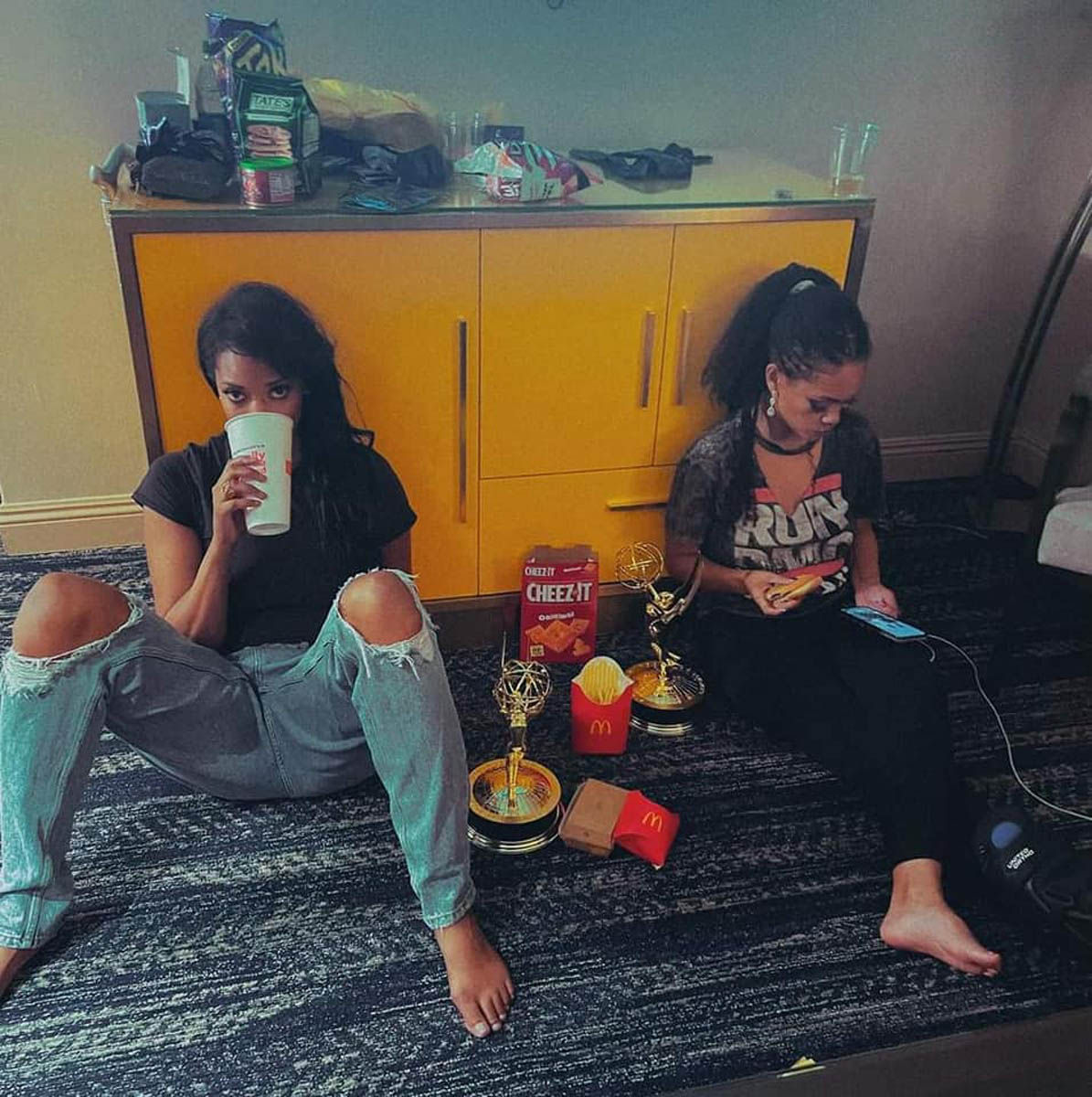
Taylor Mason and Filo. Just a couple of gals with their Emmys.
We've all known each other for so long at this point. Bradinn last season is another one that I'm like, I know exactly what's going to make Bradinn laugh, so I'm going to put this joke in here. Or you try to pepper in something that’s for everybody.
I have this note, and I honestly cannot remember what it means, but I'm hoping you will: Fashionista jump cuts. What's the value of a jump cut? Do you use them? Are they funny in a comedy? Are they more useful in a drama?
Probably a little bit of both. I think they have a proper place in each genre. I think they can be hilarious in comedy because I think any kind of hard cuts… your goal is to kind of take someone by surprise, right? The element of surprise. I do that a lot with music. Music edits in comedy where it's: “This is happening, this is happening, and then boom, you're out of it.” Then visually, the montage in "Spacing Out." I think it's just fun to show the amount of time that's passed that Gabrielle is having her freak out. It just implies that she's spent 20 minutes freaking out about this thing.
Let's talk a little bit about the History of the World Part II and comedy pacing, and timing. You've been on Black Lady Sketch Show so long that you know what Robin wants. You know, “Hey, I’ve got to really pace this up.” You're working on History of the World, and you've got a different team and a different style and different dailies. So how does that affect the pace at which you cut?
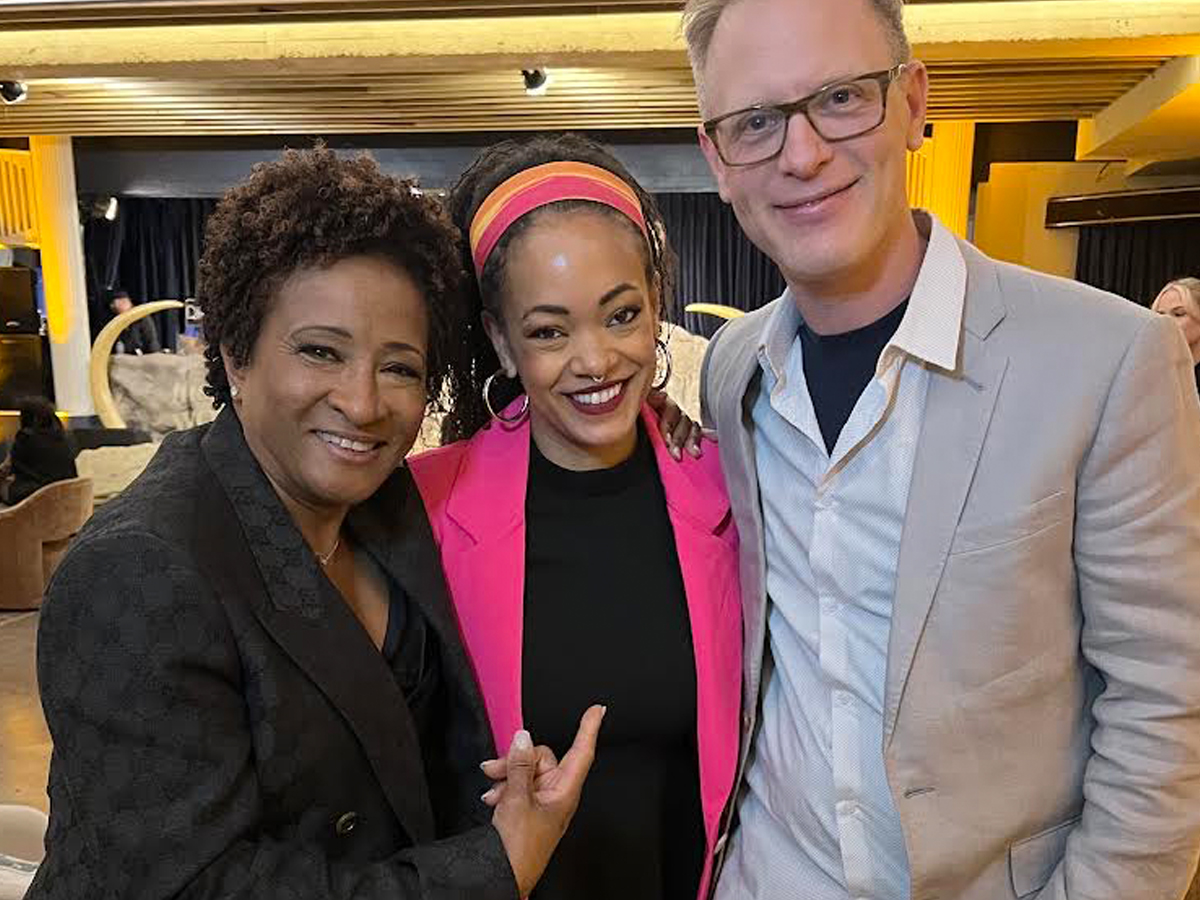
Wanda Sykes, Filo, and editor George Mandl
There's the Sketch Show way of cutting comedy and then there's the NOT Sketch Show way of cutting comedy. I kind of deferred to somewhere in the middle because History of the World — even though it has a lot of these sort of tentpole storylines — they're also broken up, but when we originally cut them, they were all one long piece.
Oh, that's interesting.
For something like the Russian Revolution, for example, when I was cutting those sections, I kind of deferred to what a normal comedy pacing would feel like. But I did pull air out in some places just to try to make punch lines hit harder, but it is a very different style of comedy than Black Lady Sketch Show. It’s fun to bounce around between both, but it did take a while because there's a team of four of us trying to figure out what the tone of the show was — and so many different styles of comedy as well. Our EPS — there were so many different kind of comedic sensibilities as well as so much talent on screen as well that was all from different realms of comedy. So it was fun just trying to find what that voice was.
Could you have caught some of those sketches as if they were going to appear in A Black Lady Sketch Show, or was it just not possible because of the way you need to let the footage speak to you?
The Freud segment? I cut that as if I was cutting A Black Lady Sketch Show sketch because it felt like it warranted a fast pace. Initially when I looked at the footage and Taika is just so funny and has so many silly improv moments that I wanted to really try to find a way to make this loud and fast. That is one sketch that I definitely approached in the same way. Also when you have it at such a fast pace, you can fill more things in there. He had so many funny moments, and I think the original version of it was super long just because I wanted people to be able to see his improv beats to see what they wanted.
Out of the whole thing, that was my favorite sketch. I just loved that parody. And it's funny that you talk about Taika because other editors that I've talked to who have cut Taika performances have said the same thing about the pure amount of gold that's in there to dig out.
I think just as a person he’s — I assume — hilarious as well because even between takes there are beats that I think I put in the original cut of that sketch and just tried to highlight his quirkiness because he's just a fun and quirky kind of guy. The section that's kind of in black and white where he's drawing all the pictures was just so over the top. We used to go back and forth a few times in there just so you could keep seeing his drawings.
HOTW editing team on set at Rock Ridge (from left: George Mandl, Filo, Daniel Flesher)
It's interesting to me, especially with comedy, the idea that there are all these great funny moments, but you can't have them all.
We had the challenge of there's too much that's funny on this show. Every take has something hilarious in it. And, there's definitely stuff on the cutting room floor that I wish people could see for this one — and for Black Lady Sketch Show — there's so much gold that doesn't get seen, but it all ends up being what feels the best in the episode.
I want to talk a little bit more about this idea of excising something that's funny. I've had scenes like this in my own work where I think, “This is a great scene” and it ends up on the cutting room floor. Can you give some examples of why something — either a scene or a shot or a line — that is great ends up getting cut?
It's ultimately about servicing the story, right? It ultimately has to go from point A to point B. It was written one specific way, and ideally, the tone and intention of that scripted version of the scene is what would carry through to the final piece. So you pepper in improv moments, but sometimes it's a moment that's so funny, but it doesn't quite like match the tone of everything else. So I think that's kind of when you usually see jokes like that that get left on the cutting room floor.
Hullfish, Filo and Steph's significant other, Michael Abitz, in NYC, Summer of 2022.
You and I met when we were both in New York City last year, and you're back in LA. Are you an LA girl? You're not into New York. You're happy to be in New York?
I was in New York cutting a feature — which I'm very proud of and which will premiere this fall. So I'll keep you updated. Steve, you were also in New York cutting a series as well, so we met up and I could walk at the time, but like a week after we hung out in New York.
Now you need even more backstory because “you could walk at the time.” What does THAT mean?
A week after we hung out in New York, I fell down some stairs and broke my ankle and tore the ligaments in my feet, so I was basically on crutches and a cane for the remainder of my time in New York.
Including the Emmy Awards, right?
Including the Emmy Awards. So I had a sparkly cane for the Emmys. I was hoping I could be off of it by then, but no such luck.
But you were very fashionable.
I tried. I like New York, but I would visit New York again now that I don't have crutches and a cane. I didn't get a chance to fully enjoy the time there because I was hobbling around most of it or inside of an edit bay the rest of it. But I'm glad that I saw you before that happened because otherwise, it would have just been a sad experience for you.
We met with your boyfriend and somebody else that you'd edited with…
Chris Rand, an amazing editor. We worked on For Life together. He cut The Crowded Room that just came out. I think that's what he was working on at the time.
I love the fact that there's an editing community, and you feel like, “Oh, I want to hang out with these people.”
It's something that I just love about editors in general. I feel like we all kind of know each other. Even if there's an editor that I haven't met, but maybe I've seen on “Editor Twitter” or on Instagram or something, then I meet them in person and it's like we've known each other for years. I love the editing community. Maybe we're biased, Steve, but I think we're the coolest of the communities.
What makes you want to work with an assistant — like Lyric is relatively new to you? I don't know. But when you hired her, what made you think she's going to be perfect?
I like an assistant editor who almost thinks ahead of me, right? So sometimes, you have a script, and there are needle drops within that script, so she thought in advance to grab those needle drops and have them ready in the project for me. Just somebody who's proactive. Somebody who wants to edit as well, because I love collaborating with my AEs and just trying to make sure they get a chance to also cut things as well. And just personality-wise, someone that I can get along with. You're spending so many hours a day with somebody that it's always great to work with great people, but also people who are passionate about what we do as well. So I look for somebody who wants to move up but also loves just being ahead of the curve on things.
I saw a great photograph of you recently that said, “My rates just went up.” Tell me about your agent. That's what that makes me think about. What's the value of an agent, and do they really get you work, or are you getting most of the work through word of mouth?
I think it's kind of a combination. Ideally, they will get your name in front of people and hustle for you — which mine do, and I'm grateful for that. We're all kind of hustling together. You just have to make sure it's a team effort.
What's the value beyond getting you work?
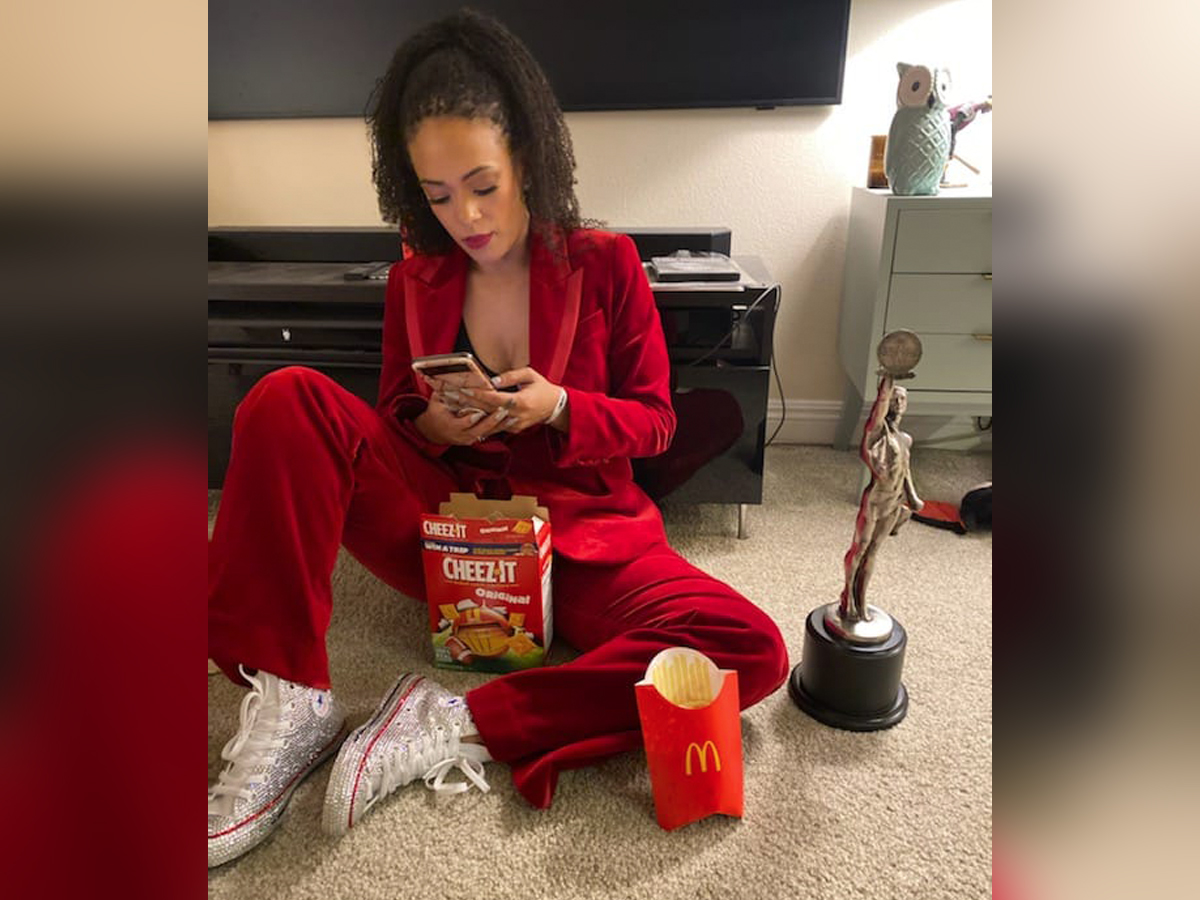
I am somebody who would work for Cheez-Its. I think that my weakness is I'm excited always about every project because I'm honored that there's anything that exists. Having an agent is good because it's somebody who can help steer you in whatever direction is maybe the most helpful at the time, and it's somebody you can kind of talk to and just get on the same page with. They might have more insight also into projects that you don't have because they also work with other behind-the-scenes talent as well. So they might already have all of the input about any project ahead of time or any insight into the production company or people — creatives — behind it. I think the value is just having that support system that can kind of help guide you and steer you in that way as well.
They also know the rate. They are fighting for your rate. They don't make you look like the bad guy…
Yeah, it's definitely helpful to have somebody who can kind of push to make sure that you're getting paid what you're worth and what you should be getting naturally, even if you didn't have an agent. But when you don't have one, projects do try to take advantage. So it's helpful to have someone that can kind of be like your advocate.
I could sit and chat all day, but I want to let you get on with your day.
Thanks for chatting.

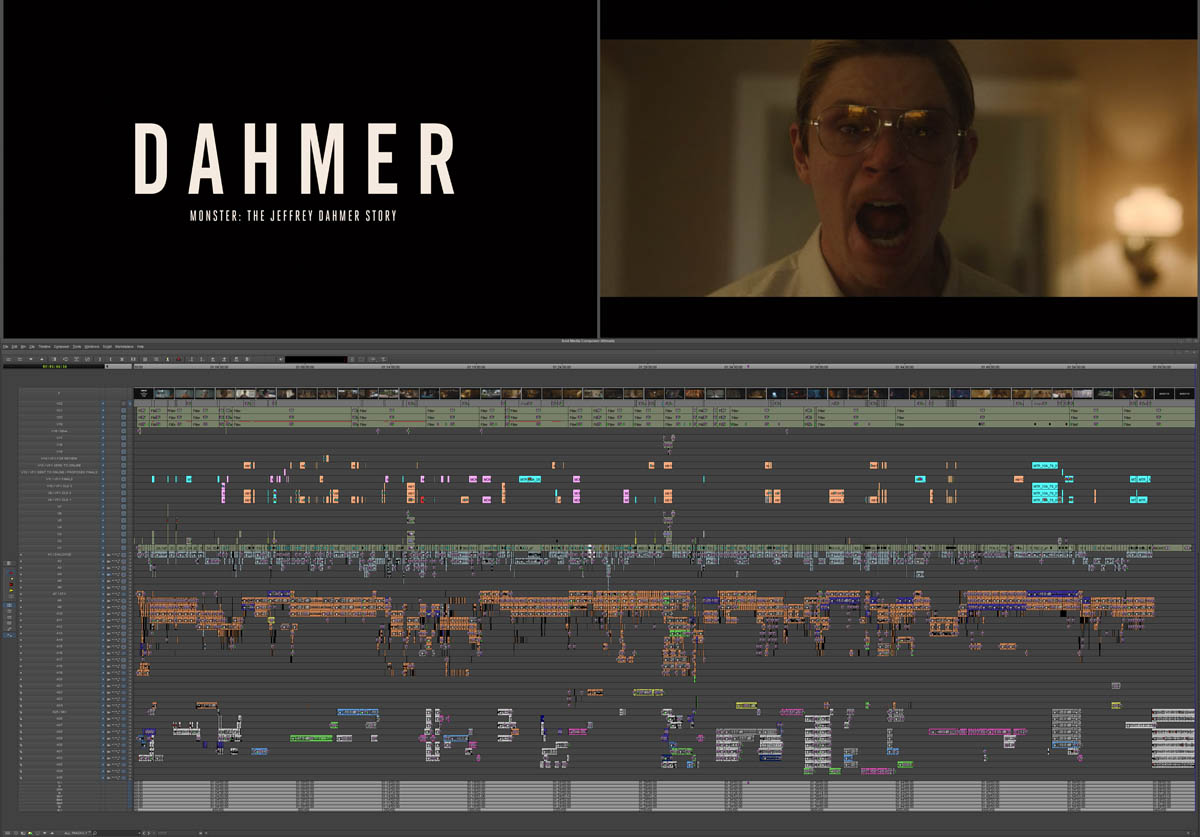
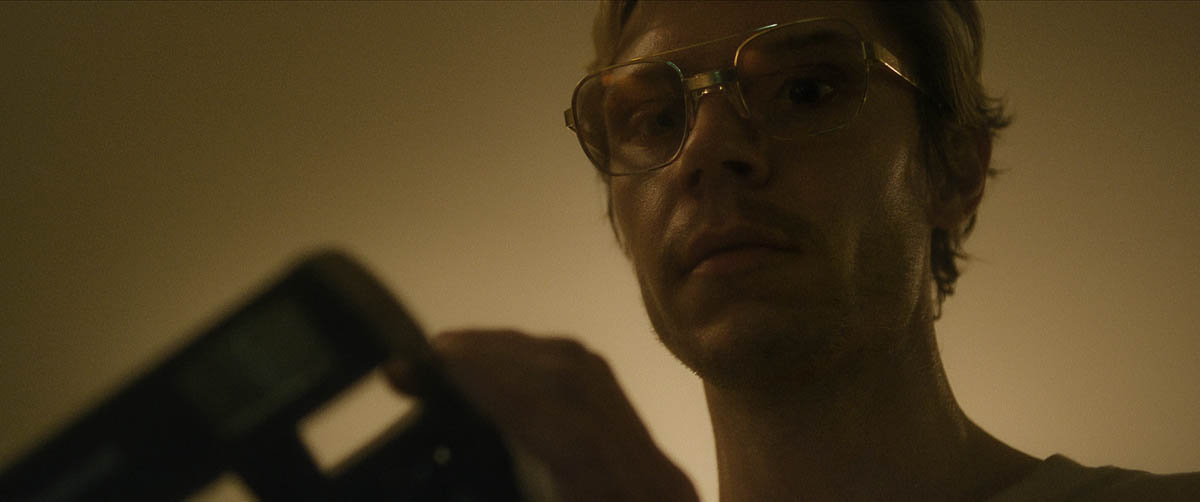
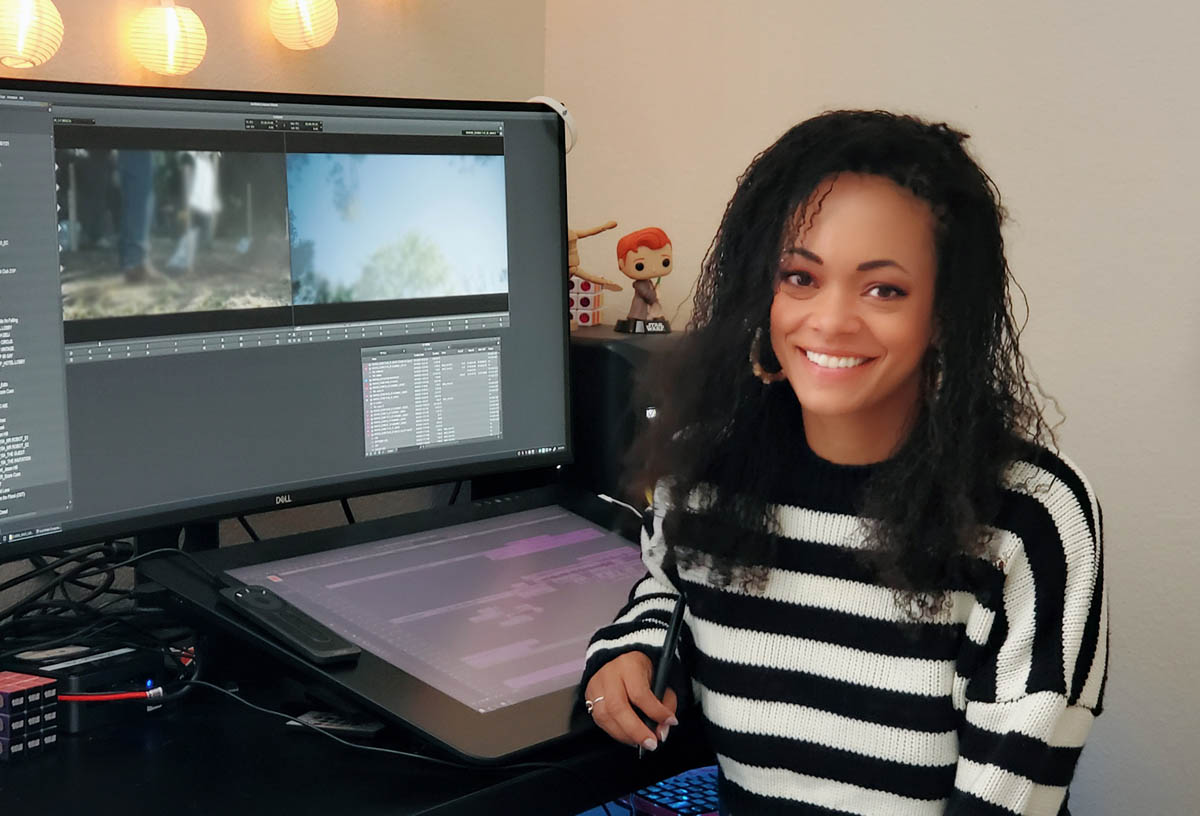
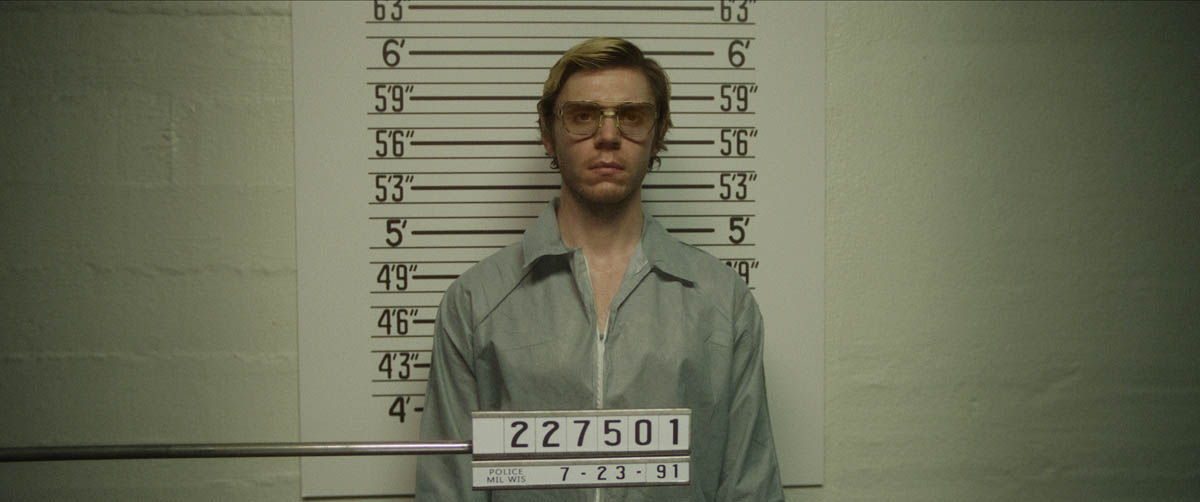
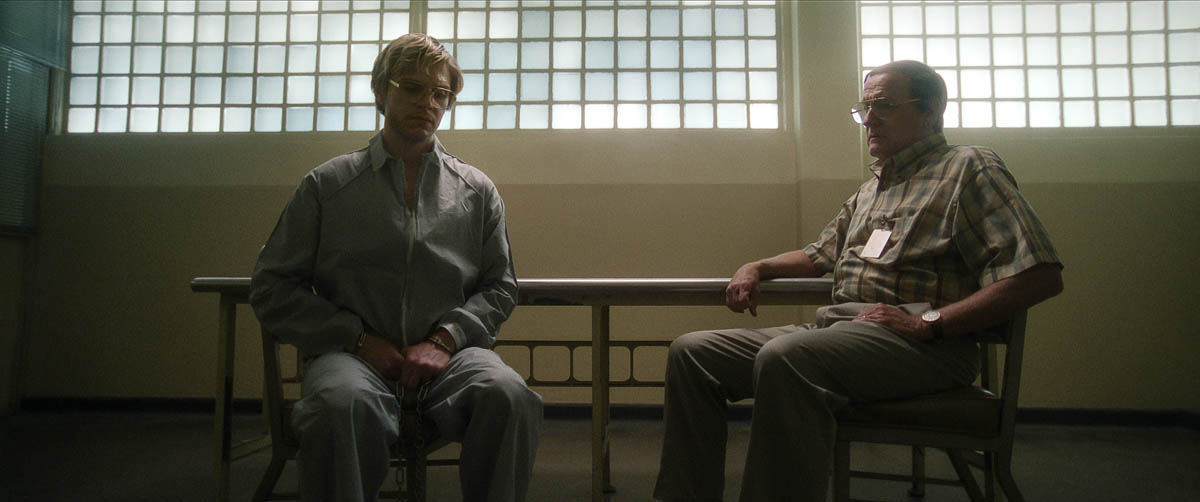
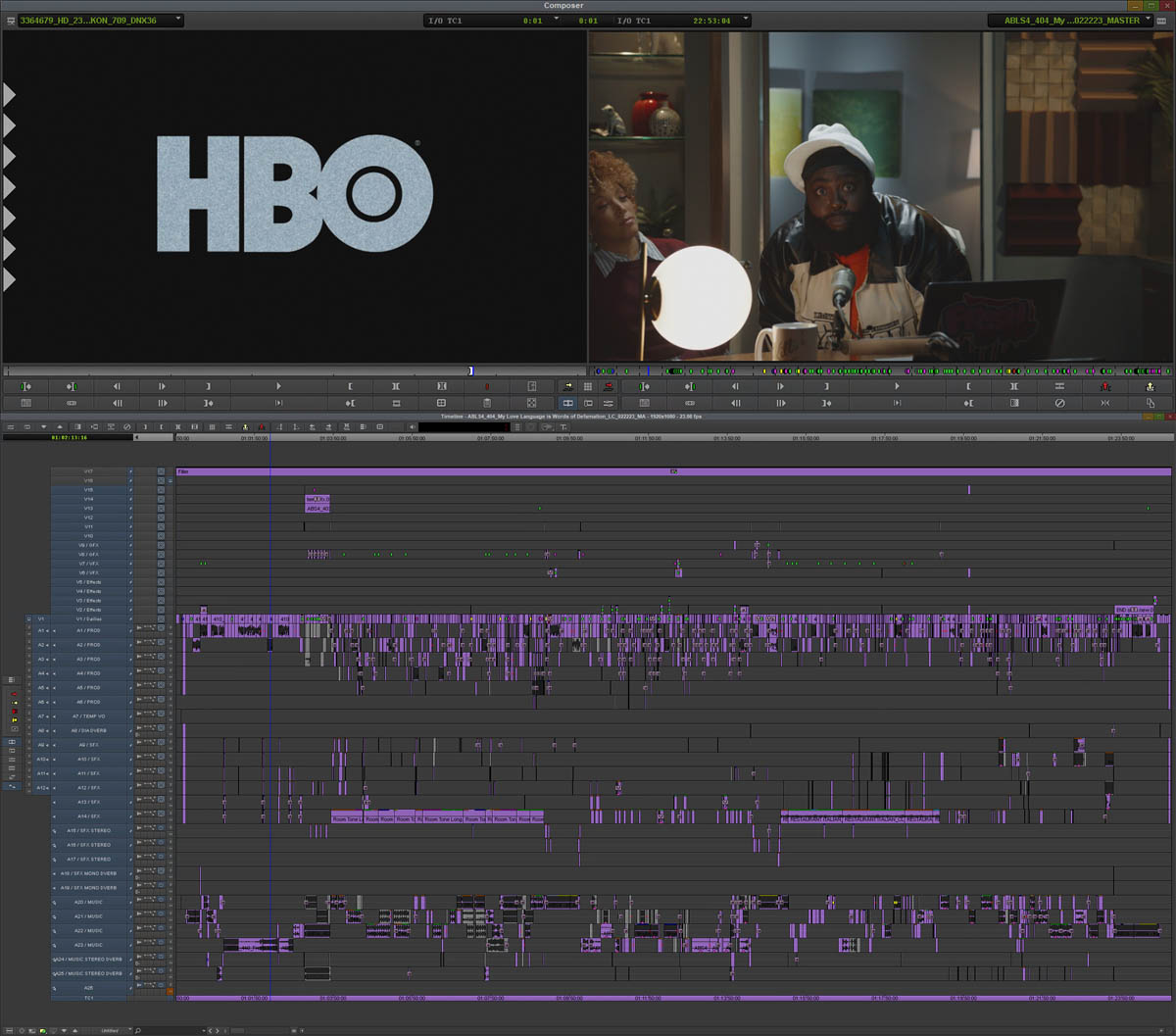
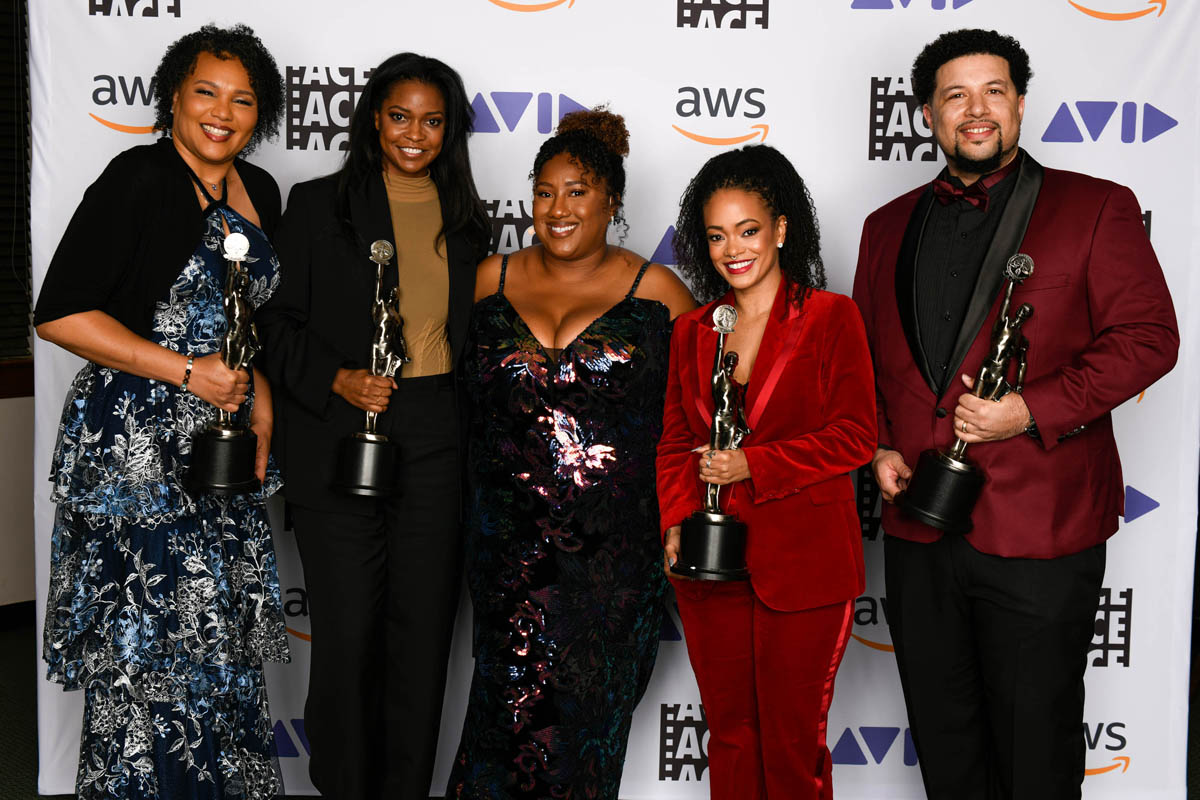
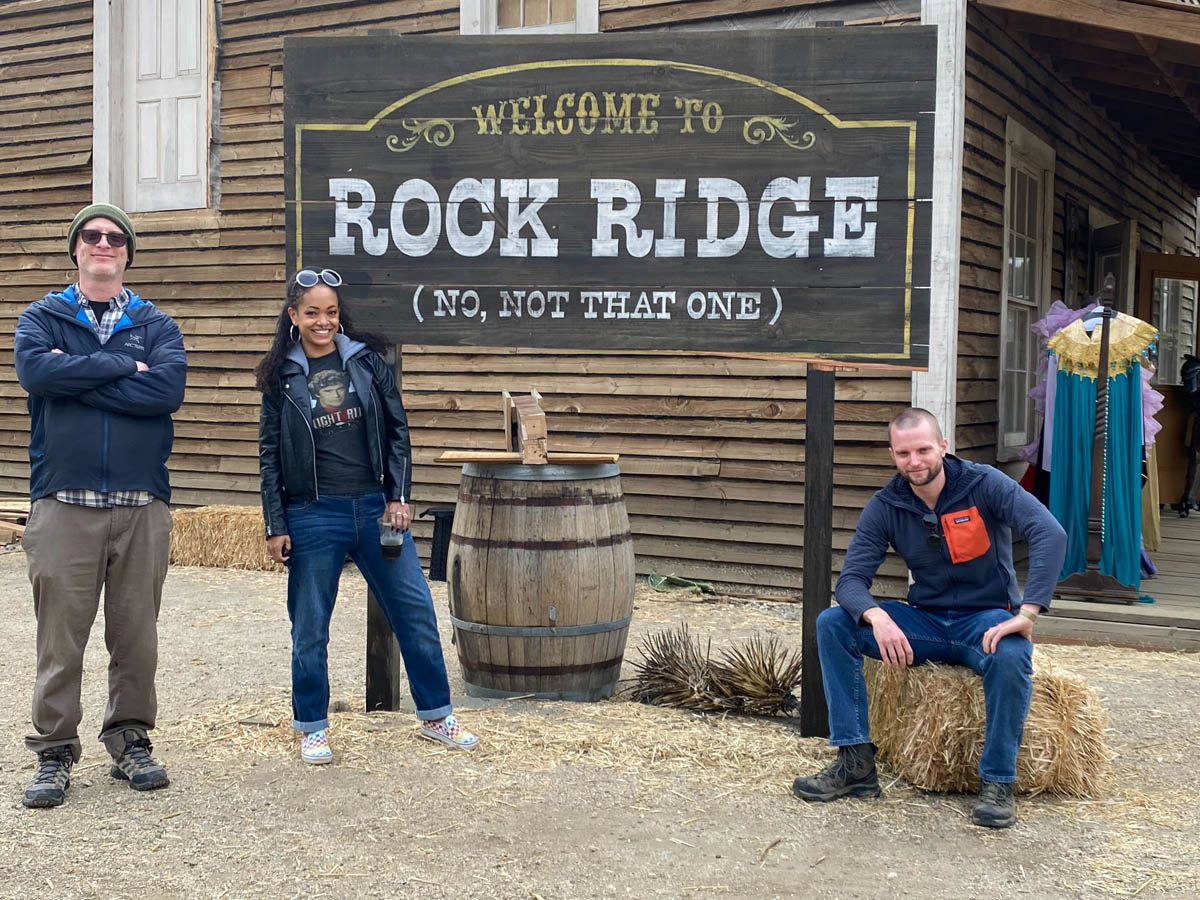
%20copy.jpg)
